Dipping graphene in solutions to generate electricity
This electric energy harvesting approach could be integrated into cost-effective, self-powered sensor designs.
May 8th, 2014
Read more
This electric energy harvesting approach could be integrated into cost-effective, self-powered sensor designs.
May 8th, 2014
Read moreGenerally, a lab-on-a-chip (LOC) can run no more than a test or two. That's because the chips are designed manually. If the LOC were made using computer-aided design, you could run dozens of tests with a single drop of blood.
May 8th, 2014
Read more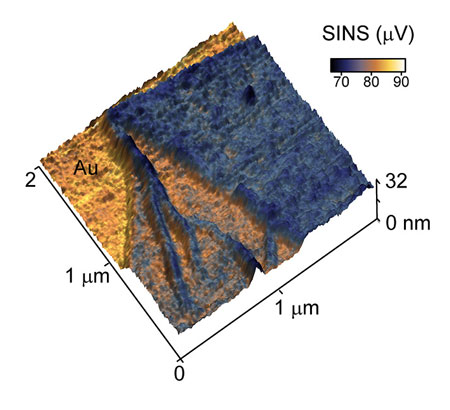 New technique uses infrared synchrotron light and atomic force microscopy to study batteries, cell membranes, stardust, and other complex systems on the nanoscale.
New technique uses infrared synchrotron light and atomic force microscopy to study batteries, cell membranes, stardust, and other complex systems on the nanoscale.
May 7th, 2014
Read more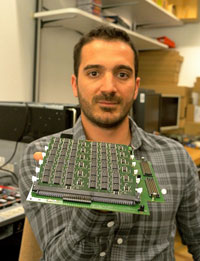 Theseus was a great hero in Greek mythology known for qualities such as strength, courage and wisdom. Therefore it's no surprise that a team of Greek IBM scientists in Zurich and a professor from the University of Patras, Greece, borrowed his name as a codeword for a groundbreaking new memory technology, which combines flash with phase change memory (PCM) on a PCI-e card. Initial tests have clocked 12x and 275x improvements - and that's no myth.
Theseus was a great hero in Greek mythology known for qualities such as strength, courage and wisdom. Therefore it's no surprise that a team of Greek IBM scientists in Zurich and a professor from the University of Patras, Greece, borrowed his name as a codeword for a groundbreaking new memory technology, which combines flash with phase change memory (PCM) on a PCI-e card. Initial tests have clocked 12x and 275x improvements - and that's no myth.
May 7th, 2014
Read more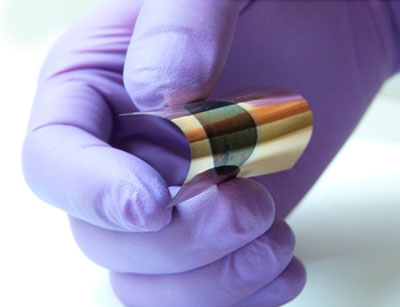 Scientists have developed a new device that's far thinner than paper, can flex and bend, and store enough energy to provide critical back-up power for portable electronics
Scientists have developed a new device that's far thinner than paper, can flex and bend, and store enough energy to provide critical back-up power for portable electronics
May 7th, 2014
Read more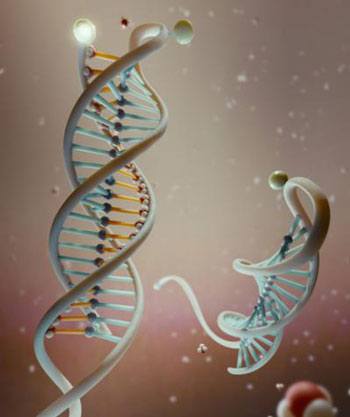 Patented nanosensor detects and reacts to second pH changes in cells caused by cancer.
Patented nanosensor detects and reacts to second pH changes in cells caused by cancer.
May 7th, 2014
Read moreHeat flow in novel nanomaterials could help in creating environmentally friendly and cost-effective nanometric-scale energy devices.
May 7th, 2014
Read more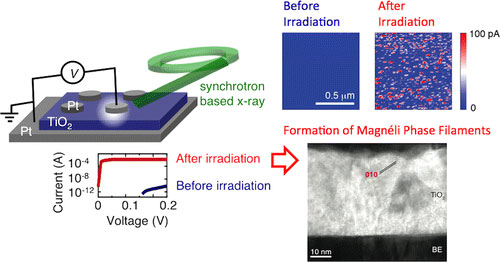 Synchrotron X-rays are frequently used to image a wide range of different materials, but they can also cause chemical changes as well. In a new study, researchers looked at how a material?s electrical resistance changes when it is irradiated with these high-energy X-rays.
Synchrotron X-rays are frequently used to image a wide range of different materials, but they can also cause chemical changes as well. In a new study, researchers looked at how a material?s electrical resistance changes when it is irradiated with these high-energy X-rays.
May 7th, 2014
Read more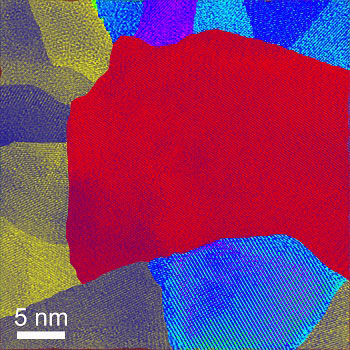 Physicists have discovered a new thermoelectric material offering high performance at temperatures ranging from room temperature up to 300 degrees Celsius, or about 573 degrees Fahrenheit.
Physicists have discovered a new thermoelectric material offering high performance at temperatures ranging from room temperature up to 300 degrees Celsius, or about 573 degrees Fahrenheit.
May 7th, 2014
Read more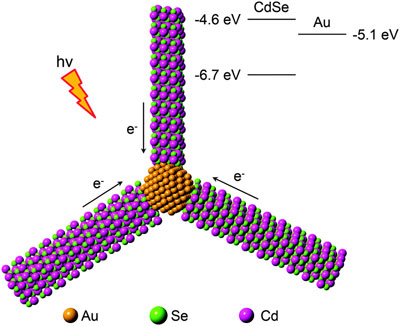 The Au-tipped CdSe nanorods were found to significantly increase the efficiency for charge separation and collection of energetic electrons in the Au nanoparticles, leading to an exceptional improvement in photocatalyzing multiple-electron reduction (MER) reactions, even in aerobic aqueous solutions at room temperature.
The Au-tipped CdSe nanorods were found to significantly increase the efficiency for charge separation and collection of energetic electrons in the Au nanoparticles, leading to an exceptional improvement in photocatalyzing multiple-electron reduction (MER) reactions, even in aerobic aqueous solutions at room temperature.
May 7th, 2014
Read more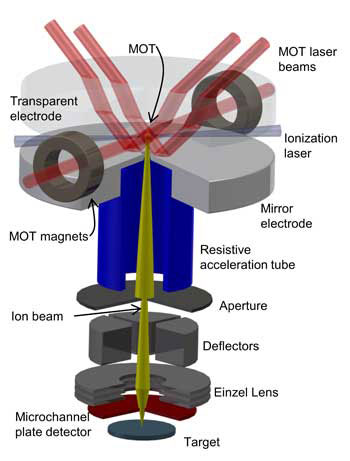 In an effort to extract a little more truth from the world of nanomaterials and nanostructures, researchers at the National Institute of Standards and Technology have built the first low-energy focused ion beam (FIB) microscope that uses a lithium ion source.
In an effort to extract a little more truth from the world of nanomaterials and nanostructures, researchers at the National Institute of Standards and Technology have built the first low-energy focused ion beam (FIB) microscope that uses a lithium ion source.
May 7th, 2014
Read more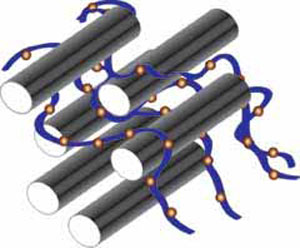 Nerve agents are among the world's most feared chemical weapons, but scientists at the National Institute of Standards and Technology have demonstrated a way to engineer carbon nanotubes to dismantle the molecules of a major class of these chemicals. In principle, they say, the nanotubes could be woven into clothing that destroys the nerve agents on contact before they reach the skin.
Nerve agents are among the world's most feared chemical weapons, but scientists at the National Institute of Standards and Technology have demonstrated a way to engineer carbon nanotubes to dismantle the molecules of a major class of these chemicals. In principle, they say, the nanotubes could be woven into clothing that destroys the nerve agents on contact before they reach the skin.
May 7th, 2014
Read more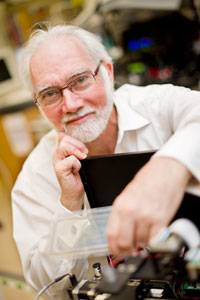 A research team using tunable luminescent nanocrystals as tags to advance medical and security imaging have successfully applied them to high-speed scanning technology and detected multiple viruses within minutes.
A research team using tunable luminescent nanocrystals as tags to advance medical and security imaging have successfully applied them to high-speed scanning technology and detected multiple viruses within minutes.
May 7th, 2014
Read moreNot only rubber is elastic: There is also another, completely different form of elasticity known as superelasticity. This phenomenon results from a change in crystal structure and was previously only found in alloys and certain inorganic materials. A Japanese scientist has now introduced the first superelastic organic compound.
May 7th, 2014
Read more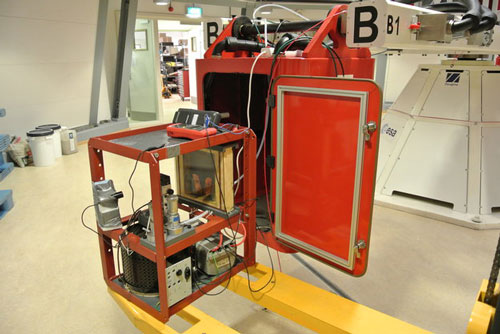 A Spin Your Thesis! experiment has shown that carbon nano materials are built differently under conditions of hypergravity. These results are useful for understanding the synthesis of carbon nano structures and the behaviour of gliding arc discharges.
A Spin Your Thesis! experiment has shown that carbon nano materials are built differently under conditions of hypergravity. These results are useful for understanding the synthesis of carbon nano structures and the behaviour of gliding arc discharges.
May 7th, 2014
Read more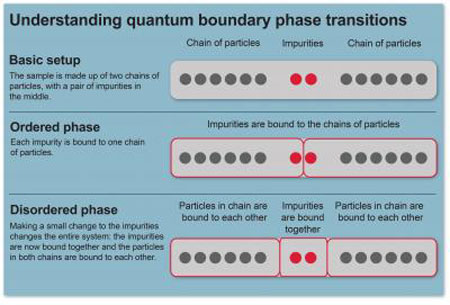 'What a curious feeling', says Alice in Lewis Carroll's tale, as she shrinks to a fraction of her size, and everything around her suddenly looks totally unfamiliar. Scientists too have to get used to these curious feelings when they examine matter on tiny scales and at low temperatures: all the behavior we are used to seeing around us is turned on its head.
'What a curious feeling', says Alice in Lewis Carroll's tale, as she shrinks to a fraction of her size, and everything around her suddenly looks totally unfamiliar. Scientists too have to get used to these curious feelings when they examine matter on tiny scales and at low temperatures: all the behavior we are used to seeing around us is turned on its head.
May 7th, 2014
Read more